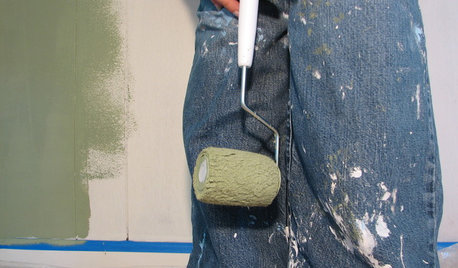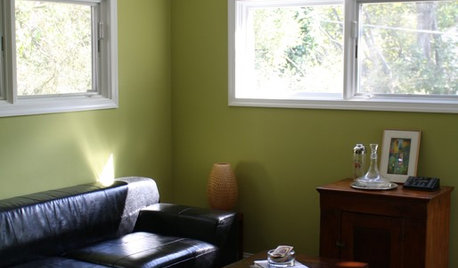Help, I need to try a different blackberry.
doof
17 years ago
Featured Answer
Sort by:Oldest
Comments (15)
fruitgirl
17 years agolast modified: 9 years agodoof
17 years agolast modified: 9 years agoRelated Discussions
trying to repair bermuda lawn, I need help...
Comments (34)I've been trying to mow about twice a week. If there is one thing I've learned over the past couple of months it's that waiting too long between mowing is one of the worst things you can do with bermuda. Most of my neighbors pay people to mow their yards, so it's always done at most once a week, or once every two weeks so their yards always look scalped and brown. I'm really looking forward to the leveling next year because I know that the lower I mow the thicker the grass will become. I was talking to my next door neighbor a few weeks ago and he said that the guy who lived in my house before it foreclosed hardly ever mowed the grass and never did any kind of lawn maintenance. This would explain why the grass was so patchy and thin and also why there were two large areas in the yard that had no grass which resulted in serious erosion of the top layer of clay/soil and I have a brown driveway to show for it. BTW samlawn, I noticed that we live in the same part of Cobb Co. :)...See MoreNeed Blackberry cell phone help!
Comments (7)Glad your problem was so easily taken care of...sounded like mine when mine got wet and I turned it back on too quick...had to replace. It still will call out and recieve calls, but no screen...haven't taken it to be looked at, would make me a emergency one or one for some of the other people in my house that can't seem to keep one alive...lol...See MoreWild Blackberries need Help!
Comments (3)Maybe some kind of black rot. You could mow some aisles to get better airflow?...See MoreWild Blackberries need help
Comments (2)Thanks pinkmountain (great name btw). Probably the real problem is that we have a huge patch of never-tended wild berries and they're just a huge tangle of God knows how many year old dead canes and live canes. We may really end up just cutting them all down and finding a clear patch this winter and burning them - because it's going to be a doozy of a burn pile - and let them start over in a half-way orderly fashion so we can thereafter keep them pruned....See Moredoof
17 years agolast modified: 9 years agonwl_me
17 years agolast modified: 9 years agodoof
17 years agolast modified: 9 years agoreg_pnw7
17 years agolast modified: 9 years agodoof
17 years agolast modified: 9 years agofruitgirl
17 years agolast modified: 9 years agomurkwell
17 years agolast modified: 9 years agoaltadenamara
17 years agolast modified: 9 years agobfreeman_sunset20
17 years agolast modified: 9 years agoEmbothrium
17 years agolast modified: 9 years agojulieab
16 years agolast modified: 9 years agoDan AndSuch
last year
Related Stories

KITCHEN DESIGNKitchen Combo to Try: Neutral Cabinets, Different-Colored Island
Avoid a too-sterile look and establish a focal point with a contrasting island hue
Full Story
COLORChoosing Color: 1 Bedroom Tries On 5 Different Palettes
White is all right, but check out what you can do with a bolder hue
Full Story
EXTERIORSHelp! What Color Should I Paint My House Exterior?
Real homeowners get real help in choosing paint palettes. Bonus: 3 tips for everyone on picking exterior colors
Full Story
PAINTINGHelp! I Spilled Paint on My Clothes — Now What?
If you’ve spattered paint on your favorite jeans, here’s what to do next
Full Story
FUN HOUZZEverything I Need to Know About Decorating I Learned from Downton Abbey
Mind your manors with these 10 decorating tips from the PBS series, returning on January 5
Full Story
LIFEYou Said It: ‘Just Because I’m Tiny Doesn’t Mean I Don’t Go Big’
Changing things up with space, color and paint dominated the design conversations this week
Full Story
ORGANIZINGHelpful Catch-Alls Keep Visual Clutter at Bay
What a difference it makes when you corral your stuff in pretty bowls, baskets or crates
Full Story
DECLUTTERINGDecluttering Help: What to Do When Nothing ‘Sparks Joy’
If the Marie Kondo phrase doesn’t help you decide what to keep and what to discard, try asking these 4 questions
Full Story






fruitgirl